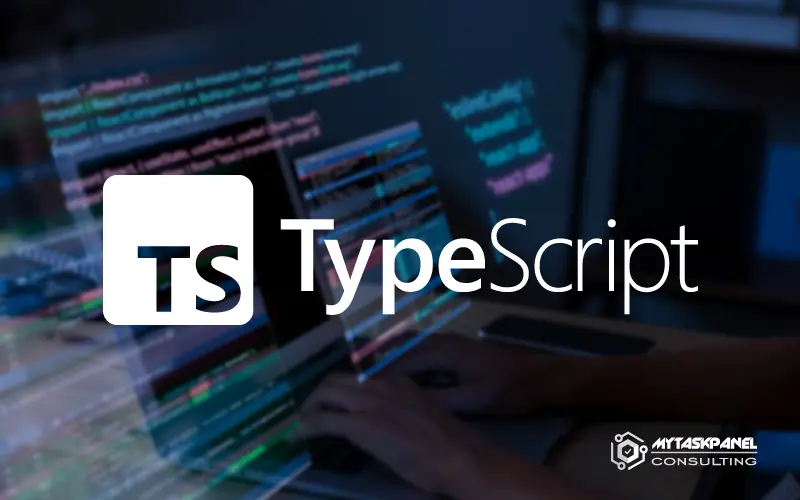Software development has come a long way since the early days of programming, and with it, a series of languages have emerged that have revolutionized the way applications are built. One such language that has gained popularity in recent years is TypeScript. In this article, we’ll tell you everything about the TypeScript programming language. You’ll learn about its benefits, drawbacks and main uses.
What is TypeScript?
TypeScript is a programming language developed by Microsoft that is based on JavaScript. While TypeScript shares similarities with JavaScript, its most notable feature is its static typing system. While JavaScript is a dynamically typed language, where variable types are resolved at runtime, TypeScript allows developers to declare types statically. This means that it is possible to specify the types of data expected for variables, function parameters, and object properties during the development phase, leading to more secure and reliable code.
TypeScript compiles into JavaScript, making it compatible with all environments that support JavaScript, from web browsers to Node.js servers. Additionally, this language is an open-source project with an active community of developers contributing to its growth and improvement.
5 advantages of the programming language TypeScript
1. Static typing
This allows for detecting errors at compile time rather than runtime, leading to more reliable and secure code. Developers can specify data types for variables, function parameters, and object properties, making it easier to identify errors early and prevent unexpected behaviors.
2. Improved code readability
The explicit declaration of types in TypeScript significantly improves code readability. Developers can easily understand what types of data are expected and produced in each part of the program, facilitating team collaboration and code maintenance.
3. Simplified maintenance
Thanks to static typing and improved code readability, maintaining software projects becomes simpler. Developers can make changes with confidence, knowing that errors will be detected before execution. This leads to more reliable code and a reduction in production errors.
4. Compatibility with JavaScript standards
TypeScript is compatible with ECMAScript 6 (ES6) features and later versions of JavaScript. This means that developers can leverage the latest language features, such as classes, modules, and arrow functions, without compatibility issues.
5. Large community and ecosystem
This language has an active community of developers and a broad user base. This results in a wealth of resources, libraries, and tools available to assist developers in their work. Additionally, many popular libraries and frameworks, such as Angular and React, offer native or common support for TypeScript.
3 disadvantages of this technology
1. Learning curve
Adopting TypeScript may require time for developers to acclimate to the static typing system, especially those more familiar with pure JavaScript. The learning curve can be an initial challenge, though the effort is generally worthwhile.
2. Compilation requirement
TypeScript requires a compilation stage before the code can run in a browser or Node.js environment. This adds an additional layer to the development workflow compared to JavaScript, which can run directly in the browser.
3. Limited documentation in some cases
While the TypeScript community is active and growing, in some cases, the documentation may be less extensive than that of JavaScript. This can make it more challenging to find solutions to specific problems, although the situation is improving over time.
Main uses of the TypeScript programming language
1. Front end web development
TypeScript is widely used in the development of front-end web applications. Frameworks like Angular and React offer native or common support for TypeScript, making it easy to create interactive and scalable web applications.
2. Back end web development
It can also be employed in the development of back-end web applications. With Node.js, developers can write server-side code in TypeScript, taking advantage of static typing.
3. Mobile applications
TypeScript is used in the development of mobile applications, particularly in the cross-platform development ecosystem. Frameworks like Ionic allow using TypeScript to create applications that run on both iOS and Android.
4. Game development
This technology has been employed in game development, leveraging its static typing features to ensure code integrity in complex and high-performance projects.
5. Enterprise projects
Large enterprise projects benefit from TypeScript due to its ability to handle complexity and long-term maintenance. The static typing system is especially valuable in critical enterprise applications.
TypeScript represents an evolution in the world of software development, providing a static typing system that enhances code security and quality. Despite its learning curve and compilation requirement, its large community and steady growth make it a solid choice for developers seeking a more reliable and efficient way to write JavaScript code. With its versatility and compatibility with JavaScript standards, this language has become a valuable tool for a wide variety of applications and development projects.










